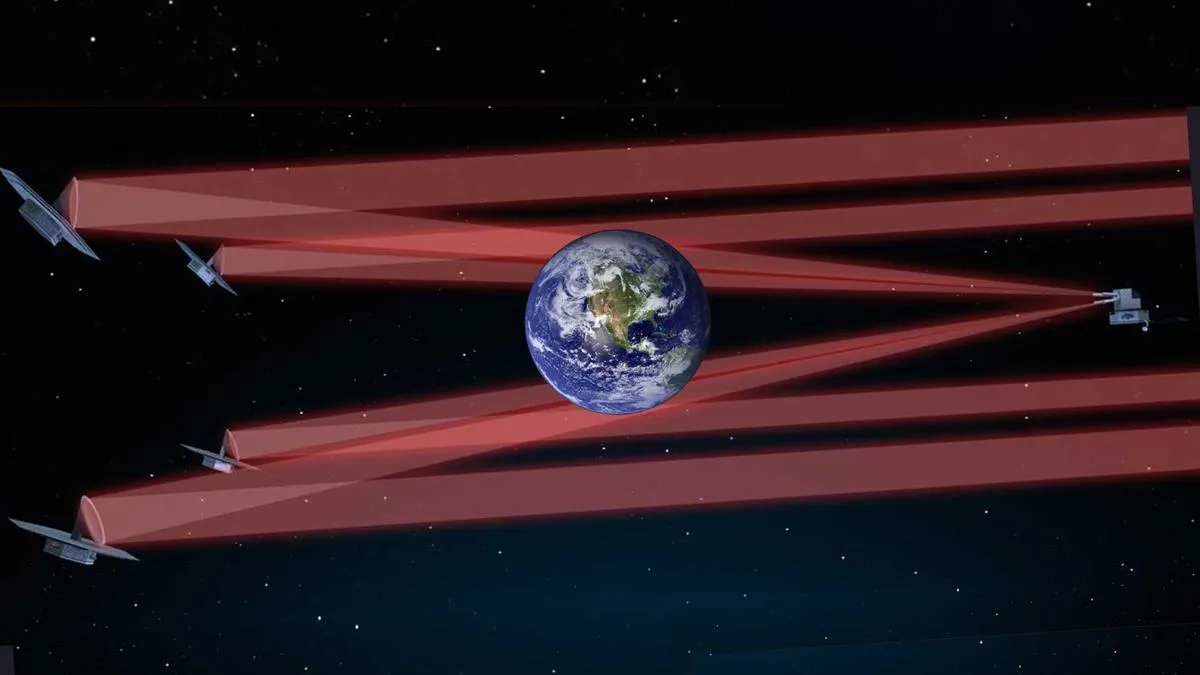
A groundbreaking mission concept known as LIFE, or the Large Interferometer For Exoplanets, aims to revolutionize our understanding of life beyond Earth. By deploying a fleet of telescopes to investigate rocky planets located in the habitable zones of their stars, this mission could provide invaluable insights into how common life may be in the universe, regardless of whether any life is actually detected. According to astronomer Daniel Angerhausen from ETH Zurich in Switzerland, even a simple positive detection of life would transform our understanding of the cosmos.
The LIFE mission proposes a formation of four space telescopes that would orbit a central combiner spacecraft. These telescopes are designed to work collaboratively, functioning as an interferometer that combines their light detections. By positioning the telescopes tens to hundreds of meters apart, they can effectively gather and analyze light signals. To enhance their capability to detect orbiting exoplanets, the telescopes will utilize a technique called nulling interferometry. This method allows the telescopes to cancel out the light from a star, enhancing the visibility of the light emitted by planets in orbit around it.
While LIFE will not directly image exoplanets, it will observe in the mid-infrared spectrum, enabling the spectroscopic measurement of planetary light. This technique will help identify the molecules present in the atmospheres of these planets, should they exist. LIFE's primary focus will be on Earth-sized planets within the habitable zones of their stars, with the goal of detecting biosignatures. These are atmospheric gases that are either produced or maintained by life, including oxygen, water vapor, ozone, methane, nitrous oxide, dimethyl sulfide, and phosphine.
Despite its ambitious goals, LIFE is currently just a concept and has not yet been adopted by any space agency. Angerhausen and his colleagues sought to determine what the mission could reveal, even in the absence of biosignature detection. To explore this, they turned to statistics. Specifically, they employed a Bayesian statistical model to ascertain the minimum number of exoplanets that must be observed to confidently determine the frequency of inhabited worlds.
Bayesian statistics calculates the probability of an event based on previously known probabilities, referred to as priors. This method allows for a nuanced understanding of confidence levels regarding various outcomes. For instance, if one hears a loud noise, Bayesian statistics would help deduce whether it was thunder or fireworks based on historical data about such events.
In contrast, frequentist statistics evaluates probabilities based solely on the frequency of events occurring over many trials, without considering prior information. For example, when flipping a coin, frequentist statistics states that the chance of landing heads or tails remains at 50%, regardless of previous outcomes.
So, how many planets would LIFE need to observe without detecting any biosignatures to draw meaningful conclusions about the prevalence of life in the galaxy? Using Bayesian statistics, Angerhausen's team determined that observing between 40 to 80 exoplanets without finding biosignatures would allow astronomers to confidently conclude that fewer than 10 to 20% of similar planets in the universe harbor life. This target is well within the capabilities of the LIFE mission.
Importantly, if LIFE finds no biosignatures within its sample, it cannot conclusively state that life does not exist elsewhere. However, it can establish a maximum limit on the number of planets with life in the galaxy, with this limit decreasing further as the sample size increases.
While LIFE has the potential to reveal significant insights about the rarity of inhabited planets, uncertainties will persist. There is a possibility that some biosignatures could be missed, as detecting certain gases can be challenging. Additionally, some planets might be mistakenly classified as habitable, complicating the findings. Angerhausen notes that identifying life is not just a numbers game; it also involves asking the right questions and ensuring confidence in our observations.
To validate their findings, Angerhausen and his team also applied frequentist statistics, yielding similar results. According to Emily Garvin, a Ph.D. student at ETH Zurich, the study aimed to illustrate how different statistical frameworks can offer complementary insights into the same data set, providing a roadmap for future research.
As we look forward to the potential launch of the LIFE mission or similar projects, the hope is that it will discover planets with some form of life. However, even in the absence of such discoveries, the results of the mission could significantly advance our understanding of life in the universe, bringing us closer to answering the profound question of our place in the cosmos.